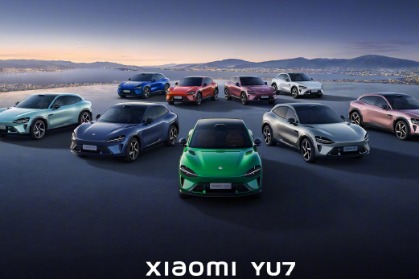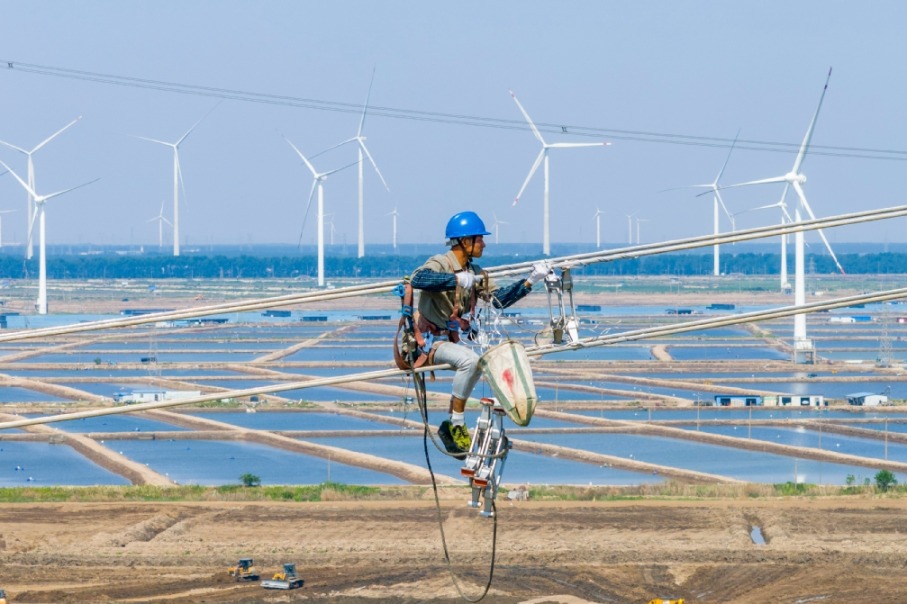The next nuclear generation

Chinese corporation is playing a crucial role in the construction of UK's massive new power plant in Southwest England
Construction work at the Hinkley Point C nuclear power plant continues around the clock in a high-profile example of international cooperation between the United Kingdom, France and China.
More than 1,900 workers are involved in the project on the Bristol Channel coastline of Somerset, a county in Southwest England.
The bustling site is a sign that the UK is on track to secure its future energy security, despite French utility company Electricite de France SA, or EDF, warning in July of potential delays and budget overruns.
China General Nuclear Power Corp, or CGN, is investing £6 billion ($7.74 billion; 6.47 billion euros) into Hinkley, which will cost £18 billion.
"Already a number of CGN people have joined us on the Hinkley project," says Richard Mayson, a senior director at EDF. "That cross-fertilization of ideas is invaluable."
The deal between CGN and EDF was signed in October 2015 during President Xi Jinping's state visit to the UK. It received formal approval from the UK government in September last year.
Hinkley Point C's lead investor, EDF, and its Chinese partners remain confident about the project. They worked together on China's Taishan nuclear power station in Guangdong province, using the same EPR technology, or third-generation pressurized water reactor design.
Developed by the French group, EPR technology raised concerns when its implementation at Flamanville, France, and Olkiluto, Finland, was plagued by delays and budget overruns.
But construction of the Taishan project is expected to be completed next year. It will be the world's first nuclear power station using EPR.
"CGN has built a large number of stations in China," Mayson says. "That ability to build to time and scale is very important to make sure Hinkley is built in the most efficient way."
It will be the first new nuclear plant to be constructed in the UK since the 1990s and will supply 7 percent of the country's electricity when completed in 2025.
It will also be a central part of Britain's efforts to replace and phase out aging power stations.
Overall capacity in the UK has fallen by 12 percent since 2012 as coal-fired power plants have been gradually shut down to comply with the government's commitments to tackle climate change.
In addition to its significance as a pioneering project, Hinkley is a landmark for China's nuclear industry.
The role that CGN is playing in the project "is not a hands-off investor", says Mayson. Its contribution also includes technical and program implementation, he adds.
EDF and CGN are also collaborating on the Bradwell B nuclear plant, a planned project in Essex, close to London.
CGN is the majority investor and will use a Hua-long Pressurized Reactor 1000, known as HPR1000, which is third-generation technology.
"Our partnership with EDF is a win-win collaboration," says Zheng Dongshan, chief executive officer of General Nuclear International, the London-based subsidiary of CGN. "We support them financially and technically at Hinkley, and they will help us to implement HPR1000 at Bradwell."
Tim Yeo, former chairman of the House of Commons energy and climate change committee, says the government's approval of Hinkley shows its strong commitment to nuclear energy and that it welcomes Chinese investment.
Contact the writers at leixiaoxun@chinadaily.com.cn and cecily.liu@mail.chinadailyuk.com
Power project charges up local spirit
Bus driver Kieran Kelly grew up hearing stories of his father's journey from Ireland to Somerset, England, to work on the construction of the Hinkley Point A nuclear power station in the 1950s.
When a job opportunity became available on the Hinkley Point C project decades later, he jumped at the chance.
Kelly, 51, speaking at the busy construction site on the Bristol Channel coastline, is full of pride when he talks about his work and his family's involvement.
While he ferries visitors to the flagship construction site, his 29-year old daughter, Amy, drives one of the project's 100-metric-ton dump trucks.
"Hinkley Point C brought so much liveliness and many new jobs to the local community," Kelly says, pointing to the trucks in the far distance across a massive field of scoured land - the size of 145 football pitches.
"I'm so proud of my daughter Amy. The amount of training she got to be able to drive a 100-ton dump truck was amazing," Kelly says. "Her employer has invested in helping her learn new skills."
The £18 billion ($23.2 billion; 19.39 billion euros) nuclear power station project is being led by France's Electricite de France SA, or EDF, along with China General Nuclear Power Corp.
Scheduled for completion in 2025, the project will create 25,000 jobs.
As well as working at the site, Kelly is also enjoying additional income from seven project employees who rent rooms at his family home.
Linda van Harn, 62, a local Somerset resident, leads a weekly tour of the site. Each trip involves around 30 visitors and lasts about two hours.
"Mostly, the visitors are British residents who have heard so much about Hinkley and just want to see it for themselves, but we also receive tourists from all over the world," van Harn says.

(China Daily European Weekly 09/15/2017 page28)
Today's Top News
- Xi urges villagers in Xizang to uphold ethnic solidarity
- Digital tax sparks breakdown in US-Canada trade talks
- Expert debunks Lai's 'four elements' argument for Taiwan's so-called statehood
- China opposes any tariff deal made at its expense: commerce ministry
- Nepal's hydropower a climate change solution
- UN Charter still guiding compass of humankind






























